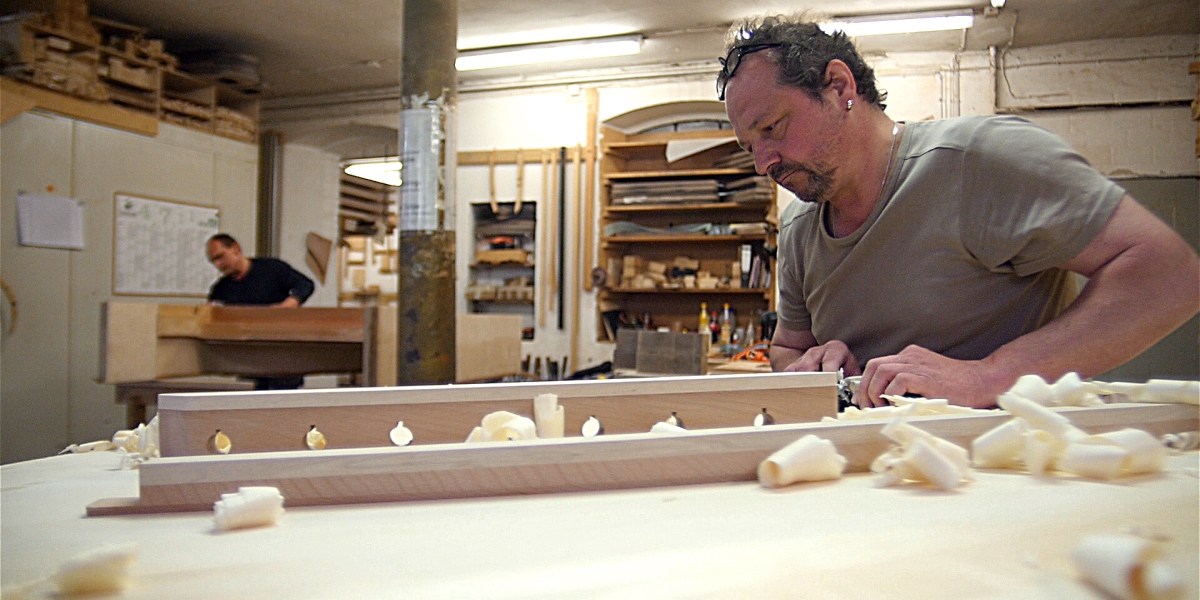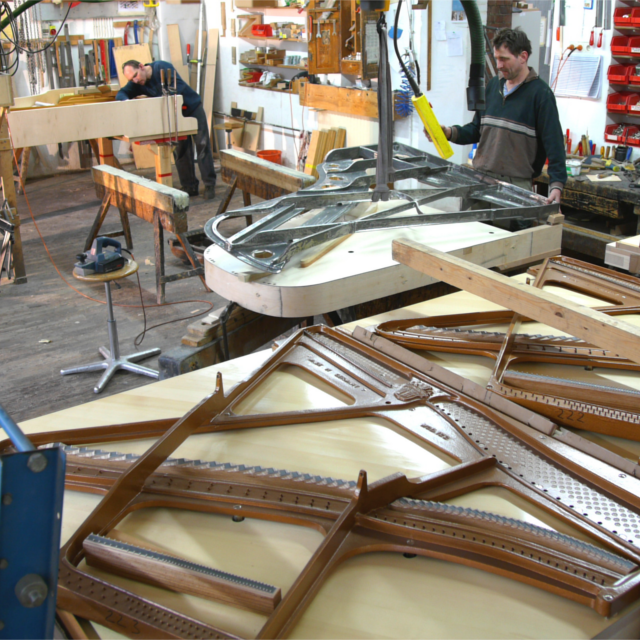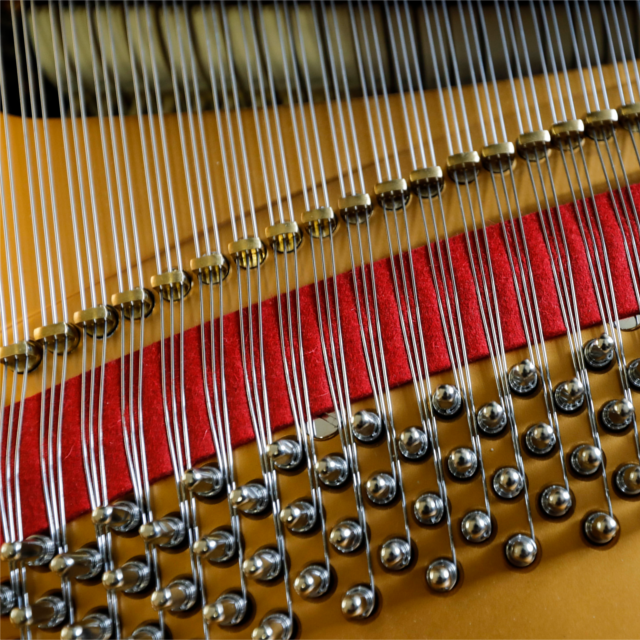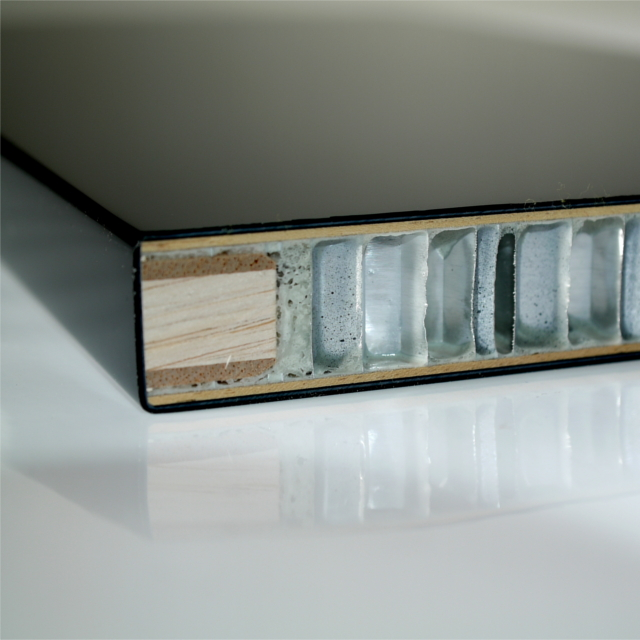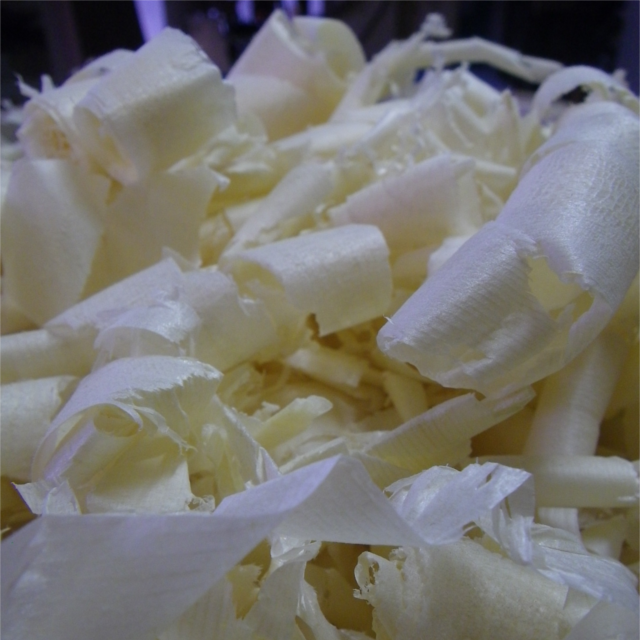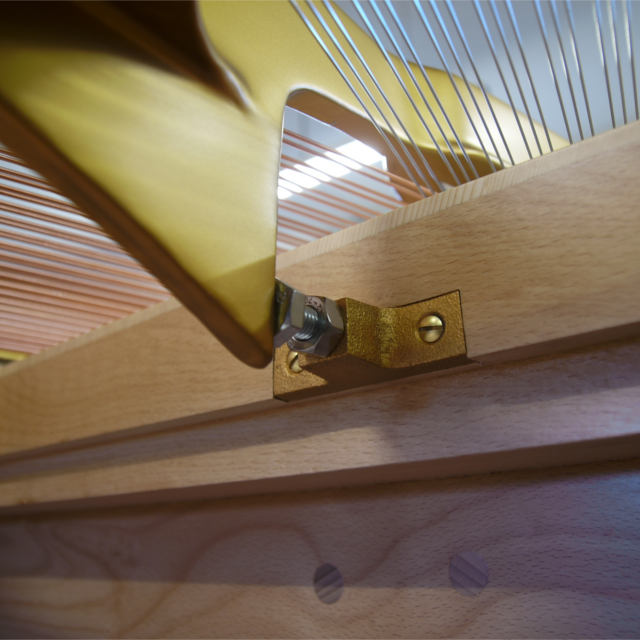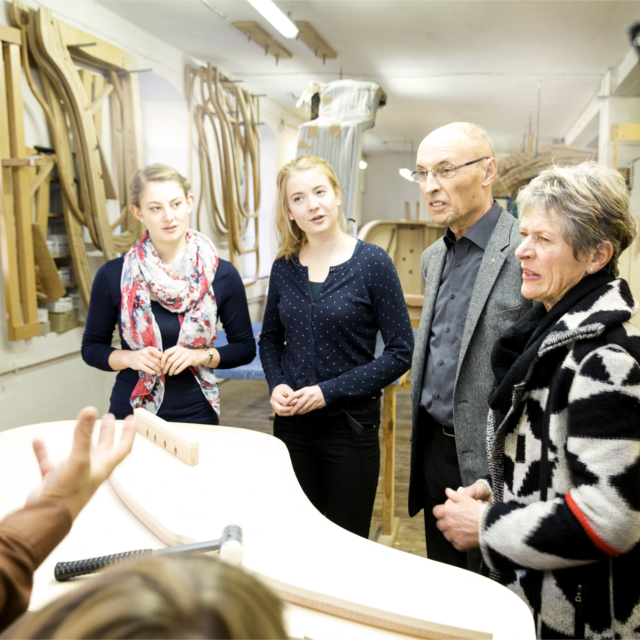Steingraeber’s Principle of Circulating Energy and Resonance
Tension inside the body of the instrument boosts energy production. Tuning the strings sets off a chain reaction, which in turn produces tension inside the soundboard.
In grand pianos, string tension acts like a ‘force transducer’ at the belly rail and – in accordance with the principle circulation – generates a ’tilt’ in the instrument’s frame via the braces, and soundboard compression via the ribs. (For this reason, the spruce ribs are positioned against hardwood which increases their life span. On many grand pianos from other manufacturers, you will see free-standing, unsecured ribs at the belly rail). The belly rail provides non-positive coupling of the bass and treble sides.
In upright pianos, the same tension builds among various components, including the frame, braces, sound board braces, bottom rail, and sides.















